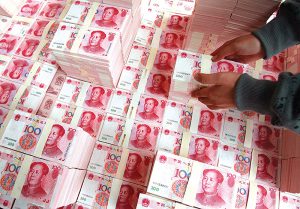Bloomberg
Russia is considering a plan to buy as much as $70 billion in yuan and other “friendly†currencies this year to slow the ruble’s surge, before shifting to a longer-term strategy of selling its holdings of the Chinese currency to fund investment. The offshore yuan briefly extended gains against the dollar after the news, rallying to a session high.
The proposal is among a slew of measures that would amount to an effective repudiation of more than a decade of economic policy as the Kremlin overhauls its strategy amid sweeping sanctions imposed by the US and
its allies over Vladimir Putin’s invasion of Ukraine.
The plan won initial support at a special “strategic†planning meeting of top government and central bank officials including Governor Elvira Nabiullina on August 30.
The approach highlights how sanctions have upended Russia’s economic strategy, with the freezing of about half of its $640 billion in foreign exchange reserves after the February invasion leaving the Kremlin without access to money it had spent years saving for a rainy day. It also underlines how efforts to diversify those holdings out of dollars and euros to reduce the risk of seizure have had only limited effect.
“In the new situation, accumulating liquid foreign exchange reserves for future crises is extremely difficult and not expedient,†a presentation on the proposal prepared for the meeting said. For years, the Kremlin contained spending and saved hundreds of billions in dollars, euros and other foreign currencies as a cushion to insulate the economy from the ups and downs of oil prices.
“The frozen $300 billion were of no help to Russia; on the contrary, they became a vulnerability and a symbol of missed opportunities,†the presentation said, in a rare official admission of the true impact of sanctions. Saving that money “is a direct reduction of investments in Russia in favour of investments in other nations,†the document said.
Even buying the currencies of “friendly†countries is problematic, it noted, saying that selling yuan holdings “requires separate agreement with China, which will be very hard to get in a crisis.†Other currencies like the Turkish lira face major
devaluation risks, the document said.
But in the short term, with earnings from exports of oil and gas flooding in and driving the current account surplus to a record this year and pushing the ruble higher, the proposal calls for spending $70 billion to buy the currencies of “friendly†countries, mostly yuan.
Banks, the plan notes, are flooded with “soft†currencies at present because efforts to shift trade out of dollars and euros so far have made limited progress and Russia’s trading partners aren’t enthusiastic about taking payment in their own currencies.
Citigroup economist Ivan Tchakarov called the plan for buying $70 billion by year-end “quite ambitious,†writing in a note that past purchases have been more modest. “In any case,†he added, “the government seems determined to finally engineer a weaker ruble into year-end.â€
Officials first broached the idea of buying “friendly†currencies to slow the ruble’s rise in June.
 The Gulf Time Newspaper One of the finest business newspapers in the UAE brought to you by our professional writers and editors.
The Gulf Time Newspaper One of the finest business newspapers in the UAE brought to you by our professional writers and editors.
